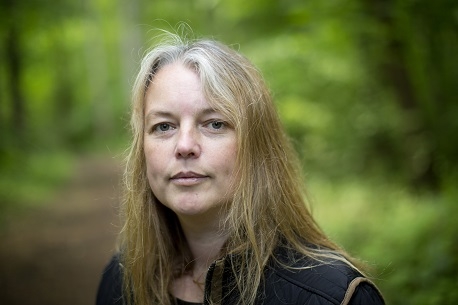Genetics provides novel insights into evolution
How do new species arise? Why are different species genetically incompatible? At the Department of Ecology and genetics, Professor Anna Qvarnström and her colleagues reconstruct millions of years of speciation using modern genetic techniques.
The question of how new species are formed has engaged evolutionary biologists since the beginning of the 19th century. The breakthrough of genetics in the 20th century laid the foundation for a deeper understanding of the speciation process. Using model systems, the researchers were able to study millions of years of evolution in plants, diseases and animals. At the Evolutionary Biology Centre in Uppsala, the evolution of flycatchers has been explored since the 1980’s.
“What is so special about the flycatchers is that we can study many pieces of the puzzle in the same study system", says Anna Qvarnström. ”First, we can examine how the birds behave and interact in their natural environment and find out how they are affected by ecological aspects such as variation in climate. In addition, we can identify the genes underlying the different environmental adaptations in each of the two flycatcher species, such as differences in metabolic rate and other physiological characters.”
“Finally, we explore whether differences in the genes underlying various adaptations cause reproductive barriers between the species, or if other genes in the genome play a larger role in the speciation process.”
The rich deciduous forests on Öland are one of few areas where both the collared flycatcher and its close relative, the pied flycatcher, breed. They often return to the same forest groves and nest boxes for years, which makes them easy to study. Every spring since 2001, Anna Qvarnström’s group also heads there to collect data and ring birds.
“The flycatchers happily return to the same nesting site. In this way, we can follow them throughout their lives, and even across generations which allows us to construct family trees and to study the inheritance of various traits.”
Another important task is to gather information on the properties that make for successful breeding under different environmental conditions.
“For example, we can examine whether individuals with certain characteristics manage climate change better than others. Since the two species sometimes pair over the art border, called hybridization, we can study speciation under natural conditions. However, hybrids of collared and pied flycatcher are either sterile or notably less fertile.”
Apparently, the species have evolved in such diverse directions that their respective genetic material is incompatible. To investigate which genes are causing the fertility problems for the hybrids, the researchers turn to molecular genetics.
“We take blood samples from the flycatchers and send them to SciLifeLab in Uppsala. The genetic code stored in the DNA molecules is extracted and with the help of bioinformaticians, we get to dive deeply into each flycatcher’s hereditary information.”
The development of modern genetic techniques brings researchers from different areas closer, and with it the potential to tie different fields of biology together, says Anna Qvarnström. Today’s large amounts of data also require more extensive partnerships and outreach activities than when she did her doctoral studies.
“We’re working with molecular geneticists but also research groups that are more focused on physiology. To be able to put together all the pieces of the puzzle, you must have access to a fairly large and broad expertise.”
Ever since Anna Qvarnström got her doctoral degree in sexual selection and life history evolution at Uppsala University in 1998, she has been fascinated by the collared flycatcher. But embarking on the research track was a coincidence; she planned to become a science journalist but the project in animal ecology was simply too exciting.
"It was such a fun way to work, to search for information by oneself and figure how to set up experiments to learn more. I just got very curious at finding out how nature works.”
The atmosphere at the Zoological Department contributed says Anna Qvarnström, and so did the varying tasks: working in the field, collating and analysing results, introducing them to other scientists.
What answers do you hope for most of all?
“I'm very fascinated by how speciation occurs at different speed in different parts of the genome. Why are some parts of the genome of two such closely related species as the collared and the pied flycatcher different while other parts are not? What differences make them incompatible?”
"It would be exciting to find out if there is a link between the origin of genetic incompatibility in the species and their adaptation to different climates, or if there are other evolutionary processes driving their speciation. But the answers probably lie far in the future.”
FACTS ANNA QVARNSTRÖM
Title: Professor of Biology, specialising in Animal Ecology
Selected awards and achievements: European Young Investigator, EURYI, Award, 2006 (predecessor to the European Research Council grants). Science policy assignment for the Swedish Research Council as a member of the Council for Science and Technology during 2013-2015.
Proud of work-wise: On one hand, an article in Science where we showed that females’ ability to choose a mate of the same species is linked to genes on the Z chromosome in flycatchers, that is to say the sex chromosome in birds that is the equivalent of the X chromosome. In birds it is the females that have two different sex chromosomes, zw, and not the males.
Also, an article in the Royal Society from 2015 where we’ve shown an association between variation at the genomic level and variation in an important fitness component, clutch size.
Family: Husband and two sons, 18 and 26 years old.
Lives: In Norby, so I’m fortunate to be able to cycle to work through Stadsskogen. There I can hear flycatchers sing in the spring, if I'm not on Öland.
In my spare time: I take a lot of long walks with our dog. I enjoy being outdoors, looking at animals and plants, as the biologist I am.
Anneli Björkman

